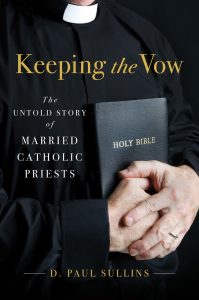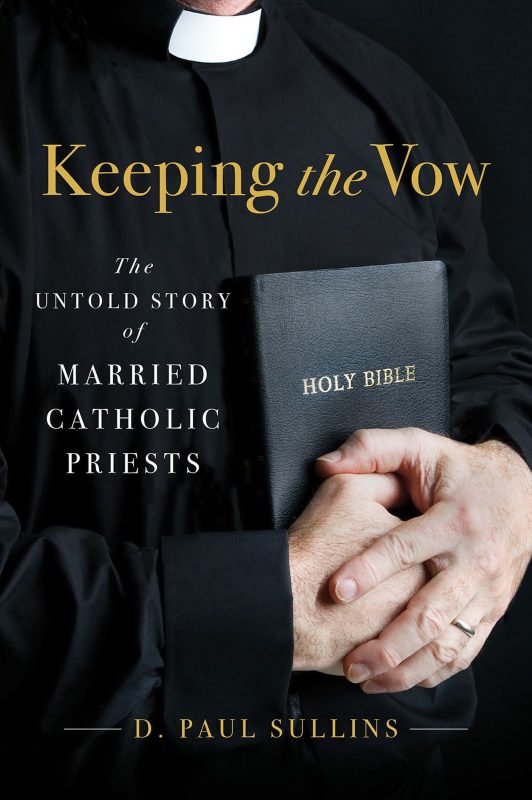In Keeping the Vow, author Fr D. Paul Sullins, a sociologist and a former Episcopal priest, presents his research on a tiny but fascinating subcategory of American Catholic priests — married Catholic priests who were formerly Episcopal priests.

This is the cover of “Keeping the Vow: The Untold Story of Married Catholic Priests” by D. Paul Sullins. The book is reviewed by Graham Yearley. (CNS)
The author is in that group; married with three adult children, he became a Catholic priest in 2002. He is a sociology professor at The Catholic University of America in Washington.
In 1980, the Vatican created a pastoral provision allowing the US to admit into the Catholic priesthood former Episcopal priests who have become Catholic. Since that time, at least 80 priests along with their wives and children have made this transition. Most of them serve in dioceses in the southwest US, many of them in Texas in the Dallas-Fort Worth area.
The transition is not easy. Former Episcopal priests are extensively tested for their suitability to serve in the Church and for the stability of their marriages.
But research shows that these priests have integrated successfully into Catholic parishes. The expected uneasiness of parishioners and the resentment by single, celibate priests have not materialised.
The wives of these priests also testify that they have been welcomed in their new parishes.
In 1976, after the Episcopal Church — the US member of the Anglican Communion
— decided to ordain women to the priesthood, some former Episcopal priests and laity sought full communion with the Catholic Church. In 2003, the Episcopal Church’s decision to ordain an openly gay man prompted other Episcopalians to join the Catholic Church.
But this transition comes at a price; married priests cannot serve as pastors to a parish, only as associate pastors.
They cannot hope to rise in the Church’s hierarchy and many of them must accept smaller salaries. At the time that these priests came into the Catholic Church, there was no health insurance benefit for spouses and children of clergy and no scholastic assistance for their children as there was in the Episcopal Church.
The entrance of married priests has not resulted in any relaxation of the rule of celibacy for single priests. But Fr Sullins’ studies show that priests ordained in the last 20 years are as a whole more at ease with celibacy than priests ordained in the 1960s and ‘70s. Both celibate and married priests rank high in job satisfaction, but oddly, married priests experience
more loneliness in the priesthood than single priests.
The priestly provision was never intended to solve the problem of the shortage of priests and hasn’t done so.
But it has given bishops another model for priesthood that has proved to be successful
beyond the single, celibate model and that in itself is valuable.
Graham Yearley is a graduate of the Ecumenical Institute of St Mary’s Seminary
and University in Baltimore.

Reader Interactions